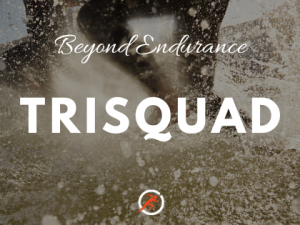RunReady
- Description
- Curriculum
- Reviews

Run Ready is your DIY guide to running stronger, longer and with less injury. This resource is designed for runners and triathletes of all levels who are eager to refine their technique, boost performance, and prevent injuries. Whether you’re a seasoned athlete or a weekend warrior, Run Ready offers personalized guidance to help you reach your goals.
-
2Introduction to the Fundamentals of Run Readiness
In this video we'll start our RunReady journey by exploring the leading causes of injury and how we can use that knowledge to become better, healthier runners. We'll also introduce the 5 fundamentals of run readiness before exploring each one on its own.
-
3Mobility
In this video we define and explore mobility as it relates to running and introduce some of the concepts we will use in part two to assess and address our mobility needs.
-
4Strength
In this video we will explore strength training and why it is such an important and foundational aspect of being run ready.
-
5Run Form/Technique
In this section we'll explore why run form is a fundamental part of run readiness and how we can use cues and drills to create quick and beneficial changes to how we run.
-
6Recovery
In this section we talk all about the importance of recovery as a fundamental of run readiness and offer suggestions on how to recover as effectively as possible.
-
7Experience
In this section we'll discuss experience and why it matters for you as a runner.
-
8Putting It All Together
In this video we summarize what we learned in part one and focus on what it means for how we plan and structure our training.
-
9How To Use the Assessments
Awesome work so far! Now that we've done some of the foundational learning, let's dive into how to assess ourselves as runners so we can begin to make powerful changes to how we run and how we take care of our body as runners. This lesson will discuss how to use the information in all of the different 'Assess' sections so we can then move onto addressing the things that matter most.
-
10Mobility: Toe Touch
-
11Mobility: Back Bend
-
12Mobility: Rotation
-
13Mobility: Squat
-
14Mobility: Single Leg Balance
-
15Mobility: Foot Assessment
-
25Toe Touch (Posterior) Mobility and Strength
If you rated yourself unable on the toe touch and single leg raise assessments, this section will help you improve your mobility and strength in the posterior chain.
-
26Toe Touch (Spine) Mobility and Strength
If you rated yourself unable on the toe touch and child's pose assessments, this section will help you improve your mobility and strength in your spine.
-
27Back Bend Strength and Mobility
If you rated yourself unable on the back bend assessment and either of the breakouts, this section will help you improve your mobility and strength in your both your hip extension and lumbar (low back) extension.
-
28Rotation (Upper) Mobility and Strength
If you rated yourself unable on the rotation and quadruped rotation assessments, this section will help you improve your mobility and strength in your spine/trunk.
-
29Rotation (Lower) Mobility and Strength
If you rated yourself unable on the rotation and hip IR/ER assessments, this section will help you improve your mobility and strength in your hips/glutes.
-
30Squat (Hip) Strength and Mobility
If you rated yourself unable on the squat and knees to chest assessments, this section will help you improve your mobility and strength at the hip.
-
31Squat (Ankle) Strength and Mobility
If you rated yourself unable on the squat and knee to wall assessments, this section will help you improve your mobility and strength at the ankle.
-
32Single Leg Balance (Foot)
If you rated yourself unable on the single leg balance, but were okay on the half kneeling balance, this section will help you improve your balance at the foot/ankle.
-
33Single Leg Balance (Hips/Core)
If you rated yourself unable on the single leg balance and half kneeling balance assessments, this section will help you improve your balance at the hip and core.
-
34Foot Strength and Mobility
If you rated yourself unable on the foot assessments, this section will help you improve your strength and function at the foot.
-
35Single Leg Sit to Stand Correctives
If you rated yourself unable on the single leg sit to stand assessment, this section will help you improve mobility, strength and motor control for this movement.
-
36Side Plank Correctives
If you rated yourself unable on the side plank assessment, this section will help you improve mobility, strength and motor control for this movement.
-
37Single Leg Bridge Correctives
If you rated yourself unable on the single leg bridge assessment, this section will help you improve mobility, strength and motor control for this movement.
-
38Single Leg Calf Raise Correctives
If you rated yourself unable on the single leg calf raise assessment, this section will help you improve mobility, strength and motor control for this movement.
-
39Overstrider Cues and Drills
This section covers the cues and drills that will help you improve your overstriding gait pattern.
-
40Collapser Cues and Drills
This section covers the cues and drills that will help you improve your collapser gait pattern.
-
41Weaver Cues and Drills
This section covers the cues and drills that will help you improve your weaver gait pattern.
-
42Bouncer Cues and Drills
This section covers the cues and drills that will help you improve your bouncer gait pattern.
-
43Glute Amnesiac Cues and Drills
This section covers the cues and drills that will help you improve your glute amnesiac gait pattern.
